#John Lofland
Text
Sun Myung Moon’s 21 year course from 1946-1967 ended in failure

▲ In this photo, taken in San Francisco (probably late 1962), John Lofland is sitting at the back on the left. Young-oon Kim is in the front row, second from the left; Peter Koch is in the center wearing glasses; Doris Orme is two behind him near the back. It may be Edwin Ang on the right.
__________________________________________
Moon started his ‘public ministry’ in Pyongyang in 1946. His 21-year course was supposed to end in 1967.
When it did not, some members left the UC.
__________________________________________

▲ Sun Myung Moon
in the 1950s
God’s Day Speech – Reverend Sun Myung Moon
January 1, 1973, 7:00 a.m. Tarrytown, New York
Translated by Mrs. Won Pok Choi
Question: At that time, in 1967, Miss Kim [Young Oon Kim] was teaching that was the end of the 21-year course.
Question: In 1967 I was told that it was the end of the 21 year course, and then the judgment was coming, and that should end in 1974. But I haven’t heard him say anything lately about what will happen in 1974, or the significance of what will happen at the end of that course.
http://www.tparents.org/Moon-Talks/SunMyungMoon73/SM730101.htm
__________________________________________
John Lofland referenced the 1967 prophecy in his book, Doomsday Cult: A Study of Conversion, Proselytization, and Maintenance of Faith. (1966, 1977)
The book was a study of the Unification Church group led by Young Oon Kim in San Francisco in 1962-63.
page 25
…
The foregoing matters were secret, but still more so was the belief in a fully restored world within seven years of 1960. Revelations 7:4 had to be fulfilled within that period: “And I heard the number of those who had received the seal. From all the tribes of Israel there were a hundred and forty-four thousand.” Upon attaining this number the “spirit world” would become visible to everyone and cause mass member conversions. The current order would collapse in the process, and members would assume the reins of the new theocracy. Members were circumspect in speaking of Korea’s “true role,” lest outsiders doubt these American’s loyalty. In safe company, Korea was venerated as “the motherland” and God’s “chosen nation.”
pages 227-28
The most spectacular of these visits supported the feeling that UC political control of Korea was imminent. In November 1962, the mass media reported the official United States visit of a Korean political figure known as the “Director” [KCIA Director, Kim Jong-pil]. A feature story on Korea and the Director’s visit appearing in a national news magazine said he was the mastermind behind the then current Korean military junta [of Park Chung-hee]. He “provides the ideas, the drive, the plans. By his own immodest but unchallenged statement, [he] is the dominant figure of … [the] ‘revolution.’ ” After talks with high level officials in Washington, the Director spent two days in San Francisco before returning to Korea. He stayed in a luxurious hotel that flew the Korean flag over its main entrance in order to honor his presence.
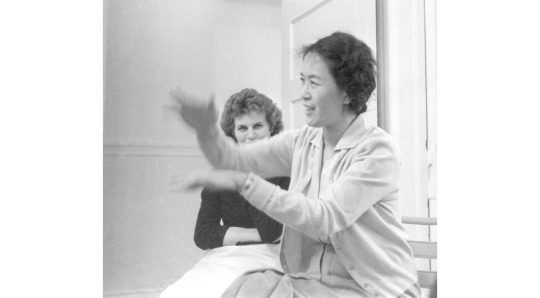
▲ Young-oon Kim in about 1962.
The day of his arrival, Miss Kim received a phone call from the Director’s aide and interpreter, a Korean army colonel and UC member. He told her that he had arranged an audience with the Director for Miss Kim and her followers. Miss Kim and five core converts appeared at the hotel the next afternoon, where they met another of the Director’s aides, who had only recently converted to the UC. Before entering the Director’s suite, the Koreans conversed excitedly in their native tongue, while American members stood around and giggled with joy. The audience with the Director himself consisted of Miss Kim telling him of her work for the UC in America, after which each local member gave a brief testimony to the UC/Divine Principle’s wonders and how it had changed their lives. The interpreter translated for the converts and for the Director, who continually smiled, nodded, and chain smoked. There were soft drinks, and toward the end of the hour the Director said that he was not a religious man but had great sympathy with UC. He could not help them publicly in Korea, but he would secretly give them a hand whenever possible.
After the audience, the members assembled in the interpreter’s room, where pictures were taken and an air of family festivity reigned.
Dinner talk back in the UC Center focussed on the audience. Miss Kim emphasized that such a meeting was unique and had occurred only because the Director had high regard for his two aides who were UC members. Note was made of the recently converted Colonel being related by marriage to the junta head and thus having direct access to him. The Director’s interpreter, Miss Kim reported, was also his speech writer. When assigned to write a speech, he always got help from a top-ranking person in Moon’s movement in order to give the speeches a Divine Principle slant. Church members had a strong suspicion that the two aides would eventually convert the Director, Kim Jong-pil.
Since Sun Myung Moon was to control the world by 1967, control of his home base [Korea] would certainly come before that time. Although UC members in America were obscure and ignored, even the most skeptical had to agree that, for some months in 1962 at least, Korean control was not a fantasy. Members had access to the people whose conversion could have given them power, if only in a short-lived coup. In any event, after their meeting with the KCIA Director, Kim Jong-pil, members possessed an important sense of being secretly near the center of power in Korea. Was this not testimony to the Unification Church member’s truth [the Divine Principle]?”
(aliases corrected in the above text – in his book, John Lofland used aliases for everyone. Miss Kim was known as Miss Lee. It was an open secret that the book was about the UC.)
Further details of this visit of KCIA Director, Kim Jong-pil HERE
__________________________________________
Young-oon Kim – it all ended in flames and tears for the professor
“Moon used to play golf regularly with Kim Jong-pil”
Religion is not the only way to view life, and its problems – and to offer some program for their resolution.
Gifts of Deceit – Robert Boettcher
#Robert Boettcher#Sun Myung Moon#7 year course#Young-oon Kim#Kim Jong-pil#Bo Hi Pak#Unification Church#John Lofland
2 notes
·
View notes
Text
Young Oon Kim, Lofland, Stark, and the Institute for Personality Assessment and Research
Both parts excerpted from Mike and Virginia McClaughry’s research:

▲ Pictured: Front row Eileen Lemmers, Patty Pumphrey, Pauline Verheyen, unknown, Doris Orme, Young Oon Kim
Back row: unknown, George Norton, Galen Pumphrey, Calvin Carey, unknown
The CIA group Institute for Personality Assessment and Research, was at UC Berkeley.
Erving Goffman was a Sociology professor at the University of California in Berkeley.
Goffman had previously received CIA funding under MK Ultra. 71
John Lofland was invited to Berkeley to work as a Teaching Assistant to Erving Goffman, starting in the Fall semester of 1960. Rodney Stark was one of their Sociology students.
CIA funding was provided to research conversion in a deviant religious group.
The project was under the Institute for Personality Assessment and Research.
John Lofland and Rodney Stark were assigned to be the researchers.
Goffman received CIA funding and he acted as handler for Lofland and Stark.
On 21 November 1960 Young Oon Kim finally stepped foot into San Francisco Haight-Ashbury district.
She was now ready to begin her real assignment – the making of the Unification Church. 59
Young Oon Kim was not gaining very many converts by preaching Moon’s religious beliefs.
In the Fall of 1961 John Lofland and Ronald Stark hook up with Young Oon Kim.
The Divine Principle is a book containing Moon’s religious teachings.
Lofland helped Kim re-write the Divine Principle to make it more acceptable.
Lofland also taught Kim to use interpersonal relationships to recruit people.
That meant that converts should bring in their family and friends. That worked.
Membership in the Unification Church then began increasing dramatically.
. . . .
John Lofland was invited to Berkeley to work on his Ph.D as a Teaching Assistant to Erving Goffman.
CIA funding was provided to research conversion in a deviant religious group.
The project was under the Institute for Personality Assessment and Research.
John Lofland and Rodney Stark were assigned to be the researchers.
Lofland and Stark would soon take Young Oon Kim under their wing.
Interview with Stark –
Stark: I enrolled at Berkeley in the fall of 1960.
Stark gets “given a research appointment at the end of the first semester“. That is December 1960.
Stark says he “went to the Survey Research Center” that was directly under the purview of the CIA Institute for Personality Assessment and Research.
As his Curriculum Vitae verifies. Specifically, it says that he was working as a “researcher for a research associate” under Charles Glock and its recently formed Survey Research Center.
John Lofland and Rodney Stark deliberately sought out a “deviant religious group” to study because that was their assignment, that’s what the grant money stipulated.
Lofland and Stark would have been reporting/discussing in to both Charles Glock and Erving Goffman throughout the whole period that they were there with the Moonies.
This shows that Erving Goffman was receiving CIA funding –
In 1995, Raymond Prince published an illustration consisting of photo reproductions of pages of the Human Ecology Fund Annual Report of July 1961.
Under “other studies, grants” and sub-heading “Other publications, monographs” we see several names that are most definitely actual full-out witting MK-Ultra operatives, such as James A Hamilton. Under ‘publications, monographs’: we see Erving Goffman show up again, clearly illustrating that he is a repeat grantee of the CIA’s largesse. (Price Anthropology Today June 2007)
In March 1962 Lofland and Stark officially moved in with the Moonies.
We said that friendship ties were in the first instance much more important than theology. That people learned the theology, but they learned it only after having already learned to trust it because their friends did.
Progress Through Theology “An interview with Rodney Stark, author of For the Glory of God: How Monotheism Led to Reformations, Science, Witch-hunts, and the End of Slavery” David Neff/ July 1, 2003
As Lofland and I settled back to watch people convert to this group, the first thing we discovered was that all of the current members were united by close ties of friendship predating this …with Miss Kim. …became friends with Miss Kim after she became a [?] with one of them. By the time Lofland and I arrived to study them, the group had never succeeded in attracting a stranger. All had been tied to group members through friendships.
We also found it instructive that during most of her first year in America Miss Kim had tried to spread her message directly by talks to various groups and by sending out many press releases. Later, in San Francisco, the group also tried to attract followers through radio spots and by renting a hall in which to hold public lectures. But these methods yielded nothing. As time passed Lofland and I were able to observe people actually become Moonies. The first several converts were old friends or relatives of members who came from Oregon for a visit. Subsequent members were people who …close friendships with one or more members of the groups.
We soon realized that of all the people the Moonies…in their efforts to…the only ones who joined were those with interpersonal attachments.
…In short, conversion is not about working or embracing an ideology, it is about bringing one’s religious behavior into alignment with that of one’s friends and family members. …Of persons who did join, many were newcomers to San Francisco whose attachments were all …far away. As they formed strong friendships with group members these were not counterbalanced because distant friends and and families had no knowledge of the conversion in progress.
The Craft of Religious Studies pp 175-196 On Theory-Driven Methods RODNEY STARK
Kim tried to attract followers through press releases and advertising, but this produced no results. Instead, what made for new converts was personal relationships. If a person had a friend or family member who was a Moonie, the prospects for conversion increased dramatically.
“Conversion is not about seeking or embracing an ideology; it is about bringing one’s religious behavior into alignment with that of one’s family and friends,” Stark says.
Stark explains, “Conversion to new, deviant religious groups occurs when, other things being equal, people have or develop stronger attachments to members of the group than they have to non-members.”
Late 20th Century Conversions: How the Moonies Did It by Julie Garner, editorial Martyrs, Myths and the Mighty, Columns magazine, U of W Alumni December 1998 issue.
John Lofland helped Young Oon Kim rewrite the Divine Principle because people found it unconvincing –
“While the second edition was far better than the first, by October, 1962, Miss Kim had begun making revisions and typing out the manuscript for the third edition. In part, this new effort came at the urging of Gordon Ross, a new member and former Woodrow Wilson scholar in linguistics at the University of California at Berkeley. He pointed out deficiencies in the text that had hindered his study and which if not amended would in his view lead scholars to dismiss it.
This time, Miss Kim was anxious to produce an authoritative version. She finished typing the manuscript on December 1, 1962, and proofreading began two days later with Gordon Ross and John Lofland, a doctoral student in Sociology at the University of California who was studying the group. They finished on December 5th. A second proofreading began on the 9th and finished on the 11th.” (Mickler, Chapter 2)
John Lofland wrote his thesis. It shows his research into the Moonies was CIA funded. It says –
This investigation was supported in part by a Public Health Service fellowship to the senior author from the National Institute of Mental Health (MPM-16, 661; 5F1 MH-16, 661-02).
John Lofland, as the senior author, was paid to do this from the CIA’s main funding conduit at this time.
#Institute for Personality Assessment and Research#berkeley#uc berkeley#moonies#unification church#john lofland#rodney stark#divine principle#young oon kim#gordon ross#Michael Mickler#national institute of mental health#CIA#1961#mkultra#mk ultra#mk-ultra#haight-ashbury#san francisco#Erving Goffman#sociology#1960#1962#Public Health Service#usa#united states of america#parapolitical#parapolitics#intelligence agencies
2 notes
·
View notes
Text
PBS MASCULINOS POR EDAD
Hola personitas. Venimos con un aporte que nos ha costado un tiempito reunir. Es posible que algunos PB tengan 1 añito más de lo que pone, porque igual cumplieron recién. Esperamos les guste ^^
-14
Tydus Talbott (9)
Diesel Rojas (11)
Diezel Ortiz (11)
Christian Convery (13)
Paxton Booth (13)
Ryan Buggle (13)
14 / 17
Matthew Illesley (14)
Iain Armitage (15)
Gavin Magnus (16)
Hayden Haas (16)
Jacob Tremblay (16)
Walker Bryant (16)
Andrew Ponch (17)
Jentzen Ramirez (17)
Sawyer Sharbino (17)
18 / 22
Noah Jupe (18)
Noah Schnapp (18)
Thiago Vernal (18)
Alex Sampson (19)
Armani Jackson (19)
Blake Talabis (19)
Brandon Rossel (19)
Brandon Spink (19)
Casey Simpson (19)
Dante Albidone (19)
Diego Martir (19)
Dylan Kingwell (19)
Eric Montanez (19)
Flynn Curry (19)
Gavin Lewis (19)
Harry Still (19)
Harvey Petito (19)
Jack Dylan Grazer (19)
Jackson A. Dunn (19)
Jacob Buster (19)
Jaden Michael (19)
Martin Rompeltien (19)
Max Valenzuela (19)
Maximo Rivano (19)
Nicolas Cantu (19)
Raúl Balilla (19)
William Franklyn Miller (19)
Zane Austin (19)
Asher Angel (20)
Finn Wolfhard (20)
Gaten Matarazzo (20)
Jaeden Martell (20)
Joaquín Bondoni (20)
Johnny Orlando (20)
Aidan Gallagher (20)
Levi Miller (20)
MattyB (20)
Wyatt Oleff (20)
Andrés Vázquez (21)
Caleb McLaughlin (21)
Gregory Kasyan (21)
Lewis MacDougall (21)
Hunter Rowland (22)
Lucas Jade Zumann (22)
Ty Simpkins (22)
24 / 27
Chandler Riggs (24)
Charlie Plummer (24)
Mateus Ward (24)
Owen Teague (24)
Devin Druid (25)
Dylan Sprayberry (25)
Hero Fiennes-Tiffin (25)
Jaden Smith (25)
Jungkook (25)
Lucky Blue Smith (25)
Shawn Mendes (25)
Asa Butterfield (26)
Austin Abrams (26)
Colin Ford (26)
Dylan Minnette (26)
Jacob Elordi (26)
KJ Apa (26)
Lucas Hedges (26)
Michael Ronda (26)
Miguel Bernardeau (26)
Tye Sheridan (26)
Álvaro Rico (27)
Austin Crute (27)
Charlie Rowe (27)
David Castro (27)
Jacob Lofland (27)
Joe Keery (27)
Kim Taehyung (27)
Kodi Smit-McPhee (27)
Miguel Herrán (27)
Nathan Westling (27)
Noah Centineo (27)
Park Ji-Min (27)
Ross Lynch (27)
Skyler Gisondo (27)
Timothée Chalamet (27)
Tom Holland (27)
29 / 32
Alex Lawther (29)
Cody Christian (29)
Dacre Montgomery (29)
Ellar Coltrane (29)
Kim Namjoon (29)
Nat Wolff (29)
Nick Robinson (29)
RJ Cyler (29)
Tony Mahfud (29)
Alexander Gould (30)
Ansel Elgort (30)
Charlie Heaton (30)
Connor Jessup (30)
Harry Styles (30)
JHope (30)
Mitchell Hope (30)
Moisés Arias (30)
Adam Hicks (31)
Alberto Rosende (31)
Cameron Monaghan (31)
Ezra Miller (31)
Jin (31)
Josh Hutcherson (31)
Min Yoongi (31)
Nick Jonas (31)
Will Poulter (31)
Zayn Malik (31)
Blas Cantó (31)
Casey Cott (31)
Cole Sprouse (31)
Dylan O’Brien (31)
Dylan Sprouse (31)
Jaime Lorente (31)
Jordan Connor (31)
Louis Tomlinson (31)
Tyler Posey (31)
Ben Hardy (32)
Charles Melton (32)
Cody Kearsley (32)
Callum Worthy (32)
Ed Sheeran (32)
Francisco Lachowski (32)
Jorge López (32)
Stephen James (32)
Vadhir Derbez (32)
33 / 42
Aaron Taylor-Johnson (33)
Alexander Calvert (33)
Bill Skarsgard (33)
Caleb Landry Jones (33)
Chris Colfer (33)
David Castañeda (33)
Dominic Sherwood (33)
Grant Gustin (33)
Jacob Anderson (33)
Justin H. Min (33)
Lee Jong-Suk (33)
Liam Hemsworth (33)
Luke Baines (33)
Nicholas Hoult (33)
Ross Butler (33)
Simon Nessman (33)
Taron Egerton (33)
Thomas Brodie-Sangster (33)
Alfred Enoch (34)
Chai Hansen (34)
Chord Overstreet (34)
Daniel Radcliffe (34)
Harry Melling (34)
Keegan Allen (34)
Joe Jonas (34)
John Bradley-West (34)
Matthew Lewis (34)
Prince Royce (34)
Rupert Grint (34)
Sean O’Pry (34)
Cody Walker (35)
Dougie Poynter (35)
Jake Abel (35)
Matthew Daddario (35)
Robbie Amell (35)
Robert Sheehan (35)
Sonny John Moore (35)
Tom Felton (35)
Tyler Hoechlin (35)
Zac Efron (35)
Alfie Allen (36)
Brendon Urie (36)
Darren Criss (36)
Don Benjamin (36)
Evan Peters (36)
Ian Harding (36)
Jeff Ward (36)
Kit Harington (36)
Lee Min-Ho (36)
Manny Jacinto (36)
Michael B. Jordan (36)
Nick Bateman (36)
Ricardo Baldin (36)
Tyler Blackburn (36)
Will Tudor (36)
Winston Duke (36)
Bruno Mars (37)
Cameron Britton (37)
Colin Morgan (37)
Daniel Sharman (37)
Jamie Bell (37)
Luke Youngblood (37)
Osric Chau (37)
Richard Madden (37)
Robert Pattinson (37)
Sam Claflin (37)
Shia LaBeouf (37)
Yon González (37)
Brant Daugherty (38)
Dave Franco (38)
David Gallagher (38)
Iwan Rheon (38)
Jon Kortajarena (38)
Kellan Lutz (38)
Luke Mitchell (38)
Theo James (38)
Tom Hopper (38)
Adam Devine (39)
Adam Driver (39)
Alfonso Herrera (39)
Bradley James (39)
Calvin Harris (39)
Gaston Dalmau (39)
Jesse Eisenberg (39)
Steven Yeun (39)
Andrew Garfield (40)
Brett Dalton (40)
Chris Hemsworth (40)
Domhnall gleeson (40)
Henry Cavill (40)
Yusuf Gatewood (40)
Adam Lambert (41)
Eddie Redmayne (41)
Harry Shum Jr (41)
Ha Seok-Jin (41)
Jamie Dornan (41)
Jared Padalecki (41)
Ju Ji-Hoon (41)
Sebastian Stan (41)
Ben Barnes (42)
Chris Evans (42)
Elijah Wood (42)
Jake Gyllenhaal (42)
Jesse Williams (42)
Joseph Gordon-Levitt (42)
Joseph Morgan (42)
Justin Chon (42)
Justin Timberlake (42)
Kunal Nayyar (42)
Rami Malek (42)
Ryan Gosling (42)
Simon Helberg (42)
Stephen Amell (42)
Tom Hiddleston (42)
43 / 52
Channing Tatum (43)
Charlie Hunnam (43)
Chris Pine (43)
Daniel Henney (43)
David Gandy (43)
Gilles Souteyrand (43)
Jason Schwartzman (43)
Jason Segel (43)
Matthew Gray Gubler (43)
Sam Heughan (43)
William Jackson Harper (43)
Adam Levine (44)
Anthony Mackie (44)
Chris Pratt (44)
Ian Somerhalder (44)
James McAvoy (44)
Jason Momoa (44)
Jesse Spencer (44)
Kevin Hart (44)
Kristofer Hivju (44)
Tyrese Gibson (44)
Chadwick Boseman (45)
Daniel Brühl (45)
Jake Johnson (45)
James Franco (45)
Jensen Ackles (45)
Josh Hartnett (45)
Ludacris (45)
Matt Bomer (45)
Tom Hardy (45)
Alex O’Loughlin (46)
Chiwetel Ejiofor (46)
Eric Christian Olsen (46)
Joe Manganiello (46)
John Cena (46)
Jon Bernthal (46)
Kal Penn (46)
Michael Fassbender (46)
Milo Ventimiglia (46)
Orlando Bloom (46)
Ryan Reynolds (46)
Scott Caan (46)
Zachary Quinto (46)
Benedict Cumberbatch (47)
Cillian Murphy (47)
Colin Farrell (47)
Kristian Nairn (47)
Michael Peña (47)
Pablo Puyol (47)
Rodrigo de la Serna (47)
Adam Rodriguez (48)
Bradley Cooper (48)
Casey Affleck (48)
David Harbour (48)
Joaquin Phoenix (48)
Johnny Galecki (48)
Leonardo Dicaprio (48)
Masi Oka (48)
Taika Waititi (48)
Tobey Maguire (48)
Andrew Lincoln (49)
Christian Bale (49)
Isaiah Mustafa (49)
Josh Radnor (49)
Misha Collins (49)
Sendhil Ramamurthy (49)
Adam Scott (50)
Adrien Brody (50)
Idris Elba (50)
Jason London (50)
Jim Parsons (50)
Josh Duhamel (50)
Neil Patrick Harris (50)
Omar Epps (50)
Ben Affleck (51)
Dwayne Jhonson (51)
Jared Leto (51)
John Cho (51)
Justin Lin (51)
Karl Urban (51)
Luke Wilson (51)
Martin Freeman (51)
Matt Schulze (51)
Sung Kang (51)
Damian Lewis (52)
Ewan McGregor (52)
Jeremy Renner (52)
Matt Damon (52)
Mark Wahlberg (52)
Michael C. Hall (52)
Paul Bettany (52)
Sean Astin (52)
53 / 62
Chris O’Donnell (53)
Gerard Butler (53)
Henry Simmons (53)
Matthew McConaughey (53)
Michael Trucco (53)
Nikolaj Coster-Waldau (53)
Richard Speight Jr. (53)
Shemar Moore (53)
Simon Pegg (53)
Skeet Ulrich (53)
Vince Vaughn (53)
Warwick Davis (53)
Dave Bautista (54)
Hugh Jackman (54)
Jack Black (54)
Jason Bateman (54)
Javier Bardem (54)
Norman Reedus (54)
Owen Willson (54)
Paul Rudd (54)
Peter Dinklage (54)
Rory McCann (54)
Toby Stephens (54)
Will Smith (54)
Aidan Gillen (55)
Daniel Dae Kim (55)
Jamie Foxx (55)
Josh Brolin (55)
LL Cool J (55)
Mark Rufalo (55)
Tom Goodman-Hill (55)
Jason Statham (56)
Jon Favreau (56)
Kiefer Sutherland (56)
Vin Diesel (56)
Vincent Cassel (56)
Will Ferrell (56)
Ben Stiller (57)
Jeffrey Dean Morgan (57)
William Zabka (57)
Conleth Hill (58)
Don Cheadle (58)
Keanu Reeves (58)
Mark Pellegrino (58)
Martin Lawrence (58)
Robert Downey Jr. (58)
Brad Pitt (59)
Lenny Kravitz (59)
Mark Sheppard (59)
Nicholas Cage (59)
Russel Crowe (59)
Jerome Flynn (60)
Jet li (60)
Jhonny Depp (60)
Mike Myers (60)
Ralph Fiennes (60)
Clark Gregg (61)
Ralph Macchio (61)
Thomas Gibson (61)
Tom Cruise (61)
Wesley Snipes (61)
Eddie Murphy (62)
Forest Whitaker (62)
George Clonney (62)
Hugh Grant (62)
Iain Glen (62)
Jean-Claude Van Damme (62)
Laurence Fishburne (62)
Woody Harrelson (62)
63 / 72
Antonio Banderas (63)
Hugo Weaving (63)
Ken Watanabe (63)
Sean Penn (63)
Hugh Laurie (64)
Sean Bean (64)
Viggo Mortensen (64)
Alec Baldwin (65)
Dolph Lundgren (65)
Andy García (67)
Mel Gibson (67)
Tom Hanks (67)
Bruce willis (68)
Denzel Washington (68)
Kevin Costner (68)
Michael Rooker (68)
Jackie Chan (69)
Jeff Goldblum (70)
Pierce Brosnan (70)
Joe Pantoliano (71)
Liam Neeson (71)
Marc Hamill (71)
Mark Harmon (71)
Bill Murray (72)
Kurt Russell (72)
+73
Richard Gere (74)
Samuel L. Jackson (74)
Ted Danson (75)
Arnold Swarzenneger (76)
Tommy Lee Jones (76)
Sylvester Stalone (77)
Tom Selleck (78)
Ben Kingsley (79)
Robert de Niro (80)
Harrison Ford (81)
Al Pacino (83)
Patrick Stewart (83)
Ian McKellen (84)
Anthony Hopkins (85)
Jack Nicholson (86)
Morgan Freeman (86)
Donald Sutherland (88)
Michael Caine (90)
109 notes
·
View notes
Text
FACECLAIMS & ETHNITICITÉS

artist : darejani-artist
DEVONS-NOUS RESPECTER ABSOLUMENT LES ETHNICITÉS SUGGÉRÉES POUR LES GRANDES FAMILLES SUZERAINES ?
S'il est préférable de respecter les ethnicités suggérées pour chaque grande famille suzeraine du Royaume nous pouvons comprendre que dans un soucis de ressources, il soit parfois difficile de les respecter.
Certes, dans un but de représentation (Westeros étant un monde vaste et riche), nous aimerions que le plus de gens puissent être représentés parmi les grandes familles du jeu.
Ainsi, au moment de choisir votre personnage et la famille, nous vous demandons de faire un minimum d'effort avant de lui choisir une ethnicité différente de celle suggérée (auquel cas d'ailleurs, si une ethnicité différente est choisi, nous changerons alors l'ethnicité choisie par celle représentée, pour favoriser l'intégration de membres futurs et pour rester cohérent.e.s).
De plus, nous tenons à vous rappeler que nous jouons dans un univers fictif et que les ethnicités à proprement parler se compare différemment des nôtres (autant dire que même les ethnicités de Westeros sont fictives). Nous avons les Premiers Hommes, les andals, le style valyrien, les dorniens, les marchiens, les rhoynars, etc. Or, le métissage est donc forcément quelque chose de plus rependu qu'on peut le penser.
Prenons pour exemple le couple royal composé de Daeron II Targaryen et Mariah Martell. Heureux parents de quatre enfants, pourtant, leurs fils ne se ressemblent pas tous physiquement.
Certains partagent les traits dorniens de leur mère, comme Baelor qui a, selon le lore officiel, des cheveux noirs de jais coupés courts, hérités de sa mère dornienne. Tandis que Maekar, quant à lui décrit comme un homme sévère, puissamment bâti, portant une barbe d'argent pâle parsemée d'or impeccablement taillée, partage le physique typiquement valyrien de la maison Targaryen. Nous souhaitons que cette diversité de physique soit conservée afin de conserver cette idée selon laquelle, puisque les héritiers de la maison Targaryen partagent de plus en plus de traits dorniens (qui, jusqu’à tout récemment étaient des ennemis de la couronne et du royaume), donne une certaine ‘’légitimité’’ aux prétentions de la Maison Feunoyr sur le Trône de Fer.

Idées de Faceclaims et des Ethnicités sur le forum
le Nord; (premières nations, métisses & blanc.he.s)
suggestions faceclaims : tantoo cardinal, lily gladstone, janae collins, zahn mcclarnon, elizabeth frances, jacob seth lofland, glenn stanton, amber midthunder, dakota beavers, michelle thrush, harlan blayne kytwayhat, stormee kipp, jessica matten, william belleau, etc.
le Conflans; (blanc.he.s & au choix)
le Val; (noir.e,s, métisses & blanc.he.s)suggestions faceclaims : bethany antonia, phoebe campbell, angela bassett, wil johnson, kurt egyiawan, steve toussaint, john macmillan, nanna blondell, savannah steyn, theo nate, viola davis, lashana lynch, thuso mbedu, sheila atim, letitia wright, michaela coel, lupita nyong'o, nonso anozie, justice smith, regé-jean page, adjoa andoh, abbie hern,
les Terres de l'Ouest; (blanc.he.s, métisses & au choix)
les Îles de Fer; (blanc.he.s, métisses & au choix)
les Terres de la Couronne; (blanc.he.s, noir.e.s, métisses & au choix)
le Bief; (asiatiques, métisses & blanc.he.s)
suggestions faceclaims : anna sawai, hiroyuki sanada, shinnosuke abe, takehiro hira, hiroto kanai, tadanobu asano, fumi nikaido, yuka kouri, moeka hoshi, takehiro hira, tokuma nishioka, yuki kura, jessica henwick
les Terres de l'Orage; (latins, métisses & blanc.he.s)
suggestions faceclaims : pedro pascal, rosabell laurenti sellers, òscar jaenada, ishbel bautista, victor oliveira, michel brown, víctor clavijo, jorge antonio guerrero, cristian gamero, mabel cadena, benedetta porcaroli
Dorne; (arabes, indiens, noir.e.s., métisses, blanc.he.s & au choix)
suggestions facelaims : mena massoud, marwan kenzari, navid negahban, meryem uzerli, halit ergenç, burak ozçivit, ugur günes, mehmet ali nuroglu, ekin türkmen, rami malek, indira varma, alexander siddig, keisha castle-hughes
Autres Régions (ex. : Tyrosh, Essos, etc.); (au choix)
10 notes
·
View notes
Text
Wonder Woman fancast
My Hypothetical reboot fancast in the Reevesverse!
My other DC fancasts
Superman
DCEU Recast
Batman
The Flash
Green Lantern
Aquaman
Green Arrow
Teen Titans
Justice League Dark
Batman Beyond
The Dark Knight Returns
Telltale’s Batman
Injustice
Legion Of Doom
Birds Of Prey
Few things first.
The Greek Gods would not be killed off
Diana is not Zeus’ daughter, she is molded out of clay and empowered by the Greek Gods/Goddesses like in the original origin.
With that out of the way, here’s my fancast
Ioanna Triantafyllidou/Joanna Fyllidou as Wonder Woman/Diana Prince

Mikey Madison as Donna Troy/Troia

Emma Myers as Wonder Girl/Cassandra Sandsmark

Nikolaj Coster-Waldau as Steve Trevor

Aidy Bryant as Etta Candy

KJ Apa as Terry Long
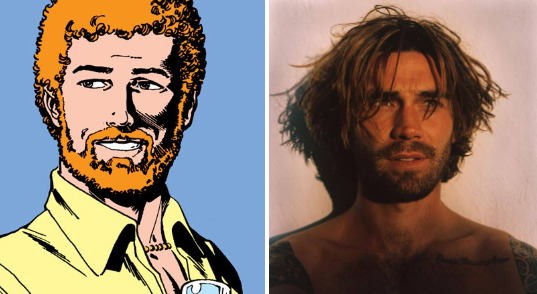
Debora Nascimento as Yara Flor

Madison Taylor Baez as Caipora

Lynda Carter as Queen Hippolyta

Renee O'Connor as Antiope
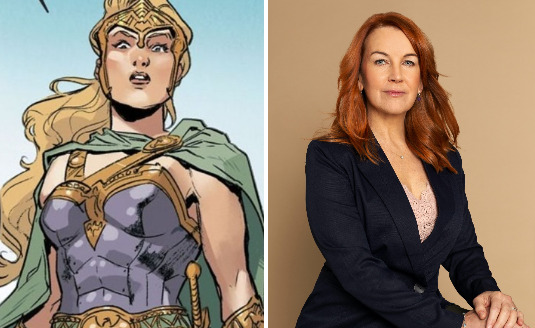
Christina Hendricks as Melanippe

Gina Torres as Nubia

Lena Headley as Penelope
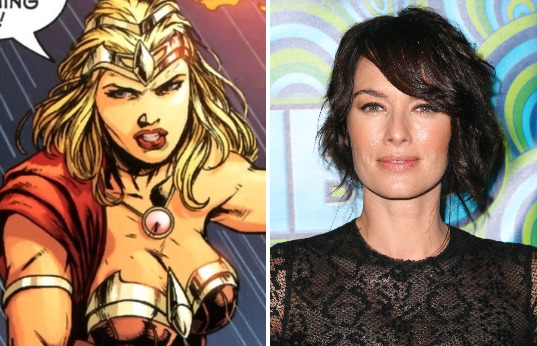
Hudson Leick as Penthesilea

Lisa Berry as Philippus

Rose Leslie as Artemis

Charlize Theron as Cheetah/Barbara Ann Minerva
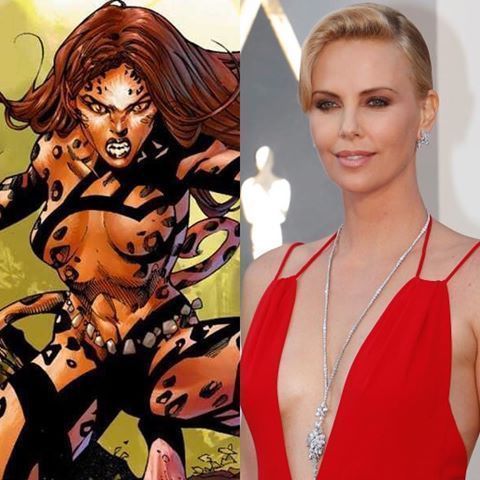
Lucy Lawless as Circe

Madeleine McGraw as Devastation

Joan Chen as Doctor Cyber/Cylvia Anita Cyber

Eihi Shiina as Doctor Poison

Peter Dinklage as Doctor Psycho/Doctor Edgar Cizko

Famke Janssen as Medusa

Sophie Turner as Silver Swan (Vanessa Kapatelis)
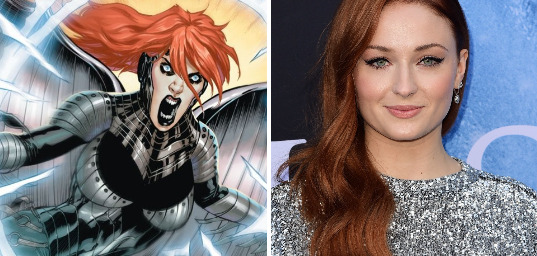
Melanie Scrofano as Giganta

Sarah Paulson as Veronica Cale
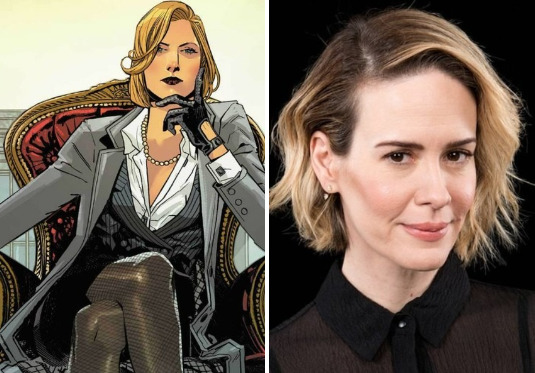
Leonardo DiCaprio as Maxwell Lord

Alexander Ludwig as Adonis

Alicia Vikander as Grail
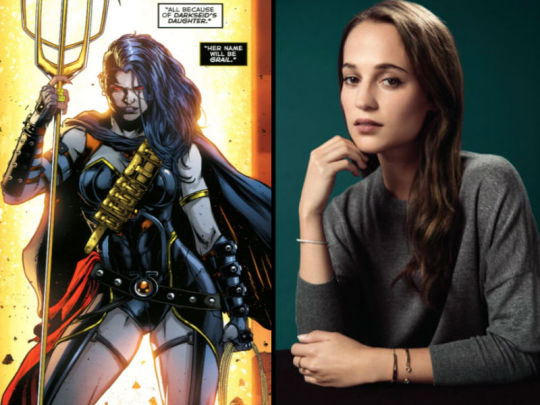
Natalie Dormer as Aphrodite
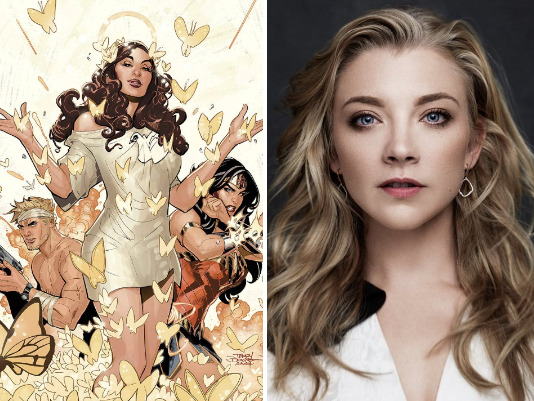
John Boyega as Apollo

Richard Armitage as Ares
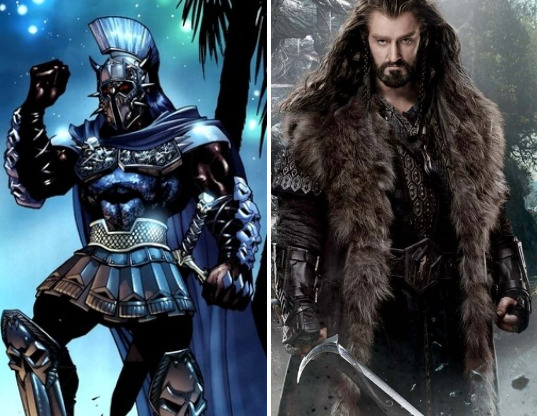
Joey King, Asa Butterfield, Jacob Lofland, Uriah Shelton and Lily-Rose Depp as The Children of Ares

Anne Hathaway as Athena

Doug Jones as Charon
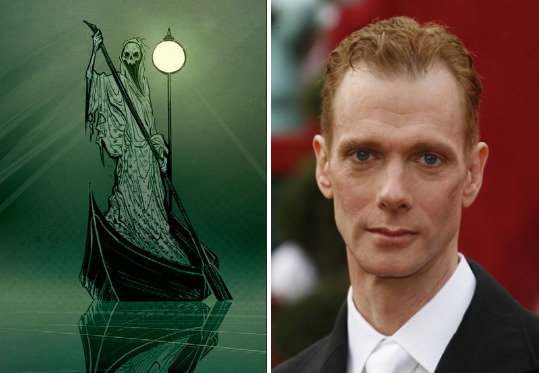
Jack Black as Dionysus

Benicio Del Toro as Hades

Andy Serkis as Hephaestus
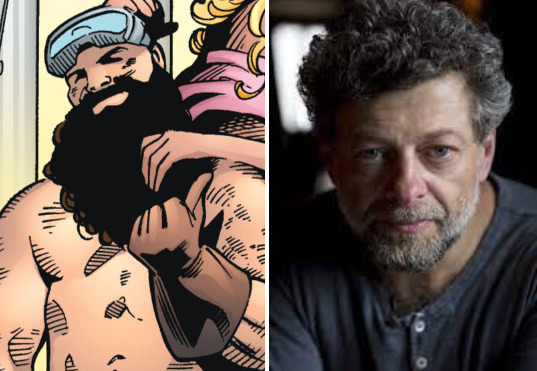
Rachel Weisz as Hera

Clive Standen as Heracles

Sam Reid as Hermes

Kaya Scodelario as Pandora
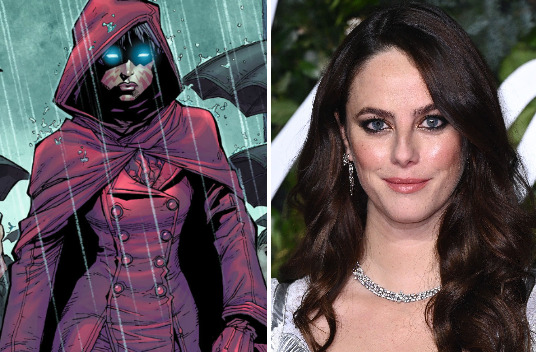
Jodie Comer as Persephone

Ryan Hurst as Poseidon

Timothy Omundson as Zeus

#DC#Fancasts#Wonder Woman#Diana Prince#Steve Trevor#Donna Troy#Wonder Girl#Cassandra Sandsmark#Etta Candy#Terry Long#Yara Flor#Caipora#Hippolyta#Antiope#Artemis Of Bana Mighdall#Melanippe#Nubia#Penelope#Penthesilea#Philippus#Circe#Doctor Poison#Doctor Cyber#Medusa#Silver Swan#Giganta#Veronica Cale#Maxwell Lord#Adonis#Grail
18 notes
·
View notes
Text
In 1863, Mississippi farmer Newt Knight serves as a medic for the Confederate Army. Opposed to slavery, Knight would rather help the wounded than fight the Union. After his nephew dies in battle, Newt returns home to Jones County to safeguard his family but is soon branded an outlaw deserter. Forced to flee, he finds refuge with a group of runaway slaves hiding out in the swamps. Forging an alliance with the slaves and other farmers, Knight leads a rebellion that would forever change history.
Credits: TheMovieDb.
Film Cast:
Newton Knight: Matthew McConaughey
Rachel: Gugu Mbatha-Raw
Moses Washington: Mahershala Ali
Serena Knight: Keri Russell
Daniel: Jacob Lofland
Sumrall: Sean Bridgers
Lieutenant Barbour: Brad Carter
Miss Ellie: Jane McNeill
Prosecuting Attorney: Gary Grubbs
Jasper: Christopher Berry
Amos Deason: Joe Chrest
Quitman: David Jensen
Injured Soldier: Kurt Krause
Confederate Color Guard: Carlton Caudle
Freedman 1: Martin Bats Bradford
Matthew Yates: Matt Lintz
Mary: Kerry Cahill
Annie: Jessica Collins
Confederate Soldier: Juan Gaspard
Junie Lee: Liza J. Bennett
Polling Station Clerk: David Maldonado
Schoolgirl: Serenity Neil
Chester: Lawrence Turner
Mrs. Deason: Lara Grice
Col. Robert Lowry: Wayne Pére
Farmer 1: Jim Klock
Town Folk: Emily Bossak
Sergeant: P.J. Marshall
Third Man: Ritchie Montgomery
Stillman Coleman: Mattie Liptak
Aunt Sally: Jill Jane Clements
Col. McLemore: Thomas Francis Murphy
Old Man: Johnny McPhail
Lt. Barbour: Bill Tangradi
First Man: William Mark McCullough
Edward James – Cotton Field Worker: Sam Malone
Boy at Alice Hotel: Kylen Davis
Farmer 2: Will Beinbrink
George: Troy Hogan
Confederate Soldier: Cy Parks
Ward: Dane Rhodes
Second Woman / Yeoman Farmer: Lucy Faust
Yeoman Girl: Stella Allen
Older Coleman Brother: Cade Mansfield Cooksey
Maroon (uncredited): Tahj Vaughans
Davis Knight: Brian Lee Franklin
Film Crew:
Casting: Debra Zane
Production Design: Philip Messina
Costume Design: Louise Frogley
Editor: Juliette Welfling
Producer: Jon Kilik
Supervising Art Director: Dan Webster
Editor: Pamela Martin
Director of Photography: Benoît Delhomme
Producer: Scott Stuber
Executive Producer: Oren Aviv
Set Decoration: Larry Dias
Writer: Gary Ross
Executive Producer: Robert Simonds
Executive Producer: Robin Bissell
Art Direction: Andrew Max Cahn
Sound Re-Recording Mixer: Paul Hsu
Executive Producer: Wang Zhonglei
Executive Producer: Stuart Ford
Prosthetics: Gary Archer
Foley: Marko Costanzo
Makeup Department Head: Nikoletta Skarlatos
Executive Producer: Wang Zhongjun
Co-Producer: David Pomier
First Assistant Director: Eric Heffron
Assistant Costume Designer: Meagan McLaughlin
Foley: Eric Milano
Second Unit Director: Garrett Warren
Visual Effects Editor: Gershon Hinkson
Executive Producer: Michael Bassick
Makeup Artist: Kris Evans
Executive Producer: Bruce Nachbar
“B” Camera Operator: Jerry M. Jacob
Executive Producer: Matt Jackson
Additional Camera: Michael Watson
Executive Producer: Christopher Woodrow
Hairstylist: Felicity Bowring
Casting: Meagan Lewis
Music Editor: John Finklea
Executive Producer: Jerry Ye
Set Designer: Randall D. Wilkins
Still Photographer: Murray Close
Sound Re-Recording Mixer: Mike Prestwood Smith
First Assistant “A” Camera: Chad Rivetti
Special Effects Coordinator: David K. Nami
Hair Department Head: Jules Holdren
Key Hair Stylist: Melizah Anguiano Wheat
Set Costumer: Adriane Bennett
Costume Supervisor: Carlane Passman
Prosthetic Makeup Artist: Matthew O’Toole
Visual Effects Producer: Lisa Beroud
Key Hair Stylist: Theraesa Rivers
Executive Producer: Russell Levine
Additional Camera: Greg Morris
Set Costumer: Tom Cummins
Art Department Coordinator: Wylie Griffin
Supervising Dialogue Editor: Branka Mrkic
Visual Effects Supervisor: Kelly Port
Second Assistant “C” Camera: Griffin McCann
Set Costumer: Lisa Magee
Wigmaker: Khanh Trance
Art Direction: Chris Craine
Gaffer: Bob Bates
Original Music Composer: Nicholas Britell
First Assistant “C” Camera: Wade Whitley
Co-Producer: Diana Alvarez
Second Second Assistant Director: Marvin Williams
“A” Came...
0 notes
Text
im reading for a sociology essay on social movements and i just read this;
"John Lofland (1993) has claimed that continual back-and-forth arguments around social movement theory are counter-productive; he argues that “theory-bashing” is far less important than “question answering.”"
and i thought i should just put that here as a reminder and as advice
1 note
·
View note
Text
Resident evil movie collection 4k


Is there something supernatural afoot or simple psychosis, and what does Isaac want?īut the characters and mysteries are superficial at best. Isaac and Grandpappy seemed to know more about the house and its current inhabitants than they should, but McAulay wants to stretch out the reveals behind the threat to the Chambers. The uncertainty gets further exacerbated with the arrival of their unwanted guests. To keep allegiances from shifting wholly to Jessica, she comes across as emotionally manipulative she uses tears and guilt to coerce John into complacency. John may be the adulterer, but he’s presented as mild-mannered and more eager to please, whereas Jessica is the icier, more assertive of the pair. Writer/Director Alex McAulay attempts to instill ambiguity from the outset. Tensions simmer then explode when over-friendly neighbors Isaac ( Jacob Lofland ) and his Grandpappy ( Doug Van Liew ) invite themselves for dinner. Jessica wants to keep her daughter Anna ( Lia McHugh ) sheltered from the strife and plans a family retreat at an isolated estate in the Louisiana bayou as part of reparations. Jessica doesn’t want a divorce she wants to maintain their family and their lifestyle. John only admits his adultery when Jessica reveals tangible proof, then quickly agrees to his wife’s demands. Jessica Chambers ( Angela Sarafyan ) calmly waits for her husband, John ( Paul Schneider ), to arrive home from work so she can demand a confession of his extramarital affair. Trying to guess what is happening keeps you on the hook for a while, but the more the answers flow, the less interesting this thriller becomes.Ī House on the Bayou opens with a marital confrontation. A House on the Bayou uses that to its advantage, shrouding its horrors in mystery. Anderson and Milla JovovichĪ remote location and uninvited guests make for a tension-filled scenario that could inspire a variety of chills and thrills. RESIDENT EVIL: THE FINAL CHAPTER BONUS FEATURES
Project Alice: The Interactive Database.
RESIDENT EVIL: RETRIBUTION BONUS FEATURES
Resident Road Map: Reflections on the Future of the Series.
“Under the Umbrella” Picture-in-Picture.
Theatrical and Extended Cuts of the Film.
“Game Over: Resident Evil Reanimated” Documentary.
Alternate Ending with Director Paul W.S.
“Based on the popular video game series by Capcom, the Resident Evil franchise stars Milla Jovovich as Alice, a superhuman security expert pitted against the sinister Umbrella Corporation as the world’s population is transformed into flesh-eating creatures by one of its most dangerous biological weapons.” The collection includes Resident Evil, Resident Evil: Apocalypse (both the original theatrical version and an extended cut), Resident Evil: Extinction, Resident Evil: Afterlife, Resident Evil: Retribution and Resident Evil: The Final Chapter as well as hours of bonus content across all six films, including rare archival featurettes that have been previously unavailable on disc.

While the 4K is a big selling point, the biggest news is that the collection includes the extended cut of the film’s sequel, Resident Evil: Apocalypse, which allegedly was only released in Germany. In addition, the films will also be available digitally in 4K with HDR. Sony announced today the Resident Evil 4K Ultra HD Collection, which brings all six films together in a limited-edition gift set, is releasing on November 3rd, 2020. Anderson‘s Resident Evil saga, which featured Milla Jovovich as the ass-kicking Alice, is getting a massive box set from Sony Pictures Home Entertainment. Note: If you purchase one of the awesome, independently chosen products featured here, we may earn a small commission from the retailer. "Based on the popular video game series by Capcom, the Resident Evil franchise stars Milla Jovovich (The Fifth Element) as Alice, a superhuman security expert pitted against the sinister Umbrella Corporation as the world's population is transformed into flesh-eating creatures by one of its most dangerous biological weapons." Anderson and Milla JovovichĤK Ultra HD: All films presented at 2160p Ultra High Definition resolution with HDR 10 and Dolby Atmos immersive audio + DTS-HD MA 5.1 original theatrical audio tracks (DTS-HD MA 7.1 for RESIDENT EVIL: THE FINAL CHAPTER) aspect ratios varyīlu-ray: All films presented at 1080p High Definition resolution aspect ratios and audio configurations vary RESIDENT EVIL: THE FINAL CHAPTER BONUS FEATURES: RESIDENT EVIL: RETRIBUTION BONUS FEATURES: 3 comments
"Under the Umbrella" Picture-in-Picture.

0 notes
Text
La percepción psicológica de la ciudad | Ignacio Grávalos – Patrizia Di Monte
En el año 2007, y por primera vez en la historia, la población urbana mundial era ya más numerosa que la población rural. Según las previsiones del Departamento de Asuntos Económicos y Sociales de Naciones Unidas, en el año 2050 el 75% de la población vivirá en las ciudades.
Bien distinta era la situación a finales de siglo XIX, cuando tan sólo el 10% de la población era urbana.
[...]
Ignacio Grávalos – Patrizia Di Monte. Arquitectos (estonoesunsolar)
Zaragoza-Venezia. Noviembre 2019.
#años 30#Chicago#ciudad#David Harvey#ecología#ensayo#Erving Goffman#escuela de Chicago#Georg Simmel#historia#imagen#Jan Gehl#John Franklin Lofland#José Antonio Corraliza#kevin lynch#Louis Wirth#Maurice Halbwachs#medio rural#patrimonio de la humanidad#Robert Ezra Park#s. xix#Saskia Sassen#sociedad#socióloga#sociologia urbana#Solomon Asch#teoría#urbanismo
0 notes
Link
by Alexandra Stein
As I ‘developed’ over the years (as our groupspeak put it) it was revealed to me that ‘struggling with the practice’ would help us transform ourselves so as to be ready to contribute to some brave new world where we would finally fight for liberation of the oppressed. Meanwhile, we foot soldiers were so exhausted by the double shifts we worked year in and year out, the endless criticisms and self-criticisms, the leadership’s frowning upon any joy and spontaneity, that we no longer had the energy nor wit to keep asking questions.
However, despite – or perhaps because of – this dull and exhausting routine, in 1991 I did eventually make my exit along with two other disaffected comrades. Together we formed what I now call an ‘island of resistance’. We were able to gradually break the code of secrecy that silenced doubts about the group and its leader. With each other as validation, we began to articulate the real, dismal and frightening story of life in The O, which had as its unlikely recruiting grounds the 1970s food co-ops of the US Midwest.
After a dramatic exit, I wrote the memoir Inside Out (2002). The book was an effort to understand how I, an independent, curious and intelligent 26-year-old, could have been captured and held by such a group for so long. It was a cautionary tale for those not yet tempted by such a fate to beware of isolating groups with persuasive ideologies and threatening bass notes.
By then, I had learned about the brainwashing of prisoners of war and others in Mao’s China and North Korea in the 1950s; I had read the psychohistorian Robert Jay Lifton’s Thought Reform and the Psychology of Totalism (1961) and the psychologist Margaret Singer’s Cults in Our Midst (1996). Singer described six conditions of cultic control among which were control of the environment; a system of rewards and punishments; creating a sense of powerlessness, fear and dependency; and reforming the follower’s behaviour and attitudes, all within a closed system of logic. Lifton emphasised that thought reform took place when human communication was controlled. Added to this, I found John Lofland’s Doomsday Cult (1966), his unrivalled undercover study of an early cell of the Unification Church – the Moonies – which outlined seven steps to total conversion centred around the isolation of the follower from everyone except other cult members. All these scholars agreed that the essence of the process was to isolate victims from their prior connections and destabilise their identity, then consolidate a new, submissive identity within a rigidly bound new network. This was achieved by alternating a regime of threats with conditional approval.
As I continued to recover from the trauma of my cult involvement, I came across the British psychologist John Bowlby’s attachment theory. This states that both children and adults will usually seek closeness to perceived safe others when stressed (even if only symbolically in the case of adults) in order to gain protection from threat. I saw this as potentially useful in helping to understand how people become trapped in cultic relationships.
Eventually, my friends twisted my arm and packed me off to the University of Minnesota. I tentatively tried a course one of them had found for me: George Kliger’s class on cults and totalitarianism. On his reading list, I found the work of the political theorist Hannah Arendt, a German Jewish refugee who examined large themes of human freedom and oppression with detailed evidence. In her seminal work, The Origins of Totalitarianism (1951), she found that the regimes of Hitler and Stalin destroyed public and private life; both regimes based themselves on ‘loneliness, on the experience of not belonging to the world at all, which is among the most radical and desperate experiences of man’.
Although The O had been a small group numbering no more than 200 at its peak, it was Arendt’s work that illuminated most clearly what I came to see as a diminutive totalitarian movement. Like the movements Arendt profiled, The O operated at the whim of a charismatic, authoritarian leader wielding an exclusive belief system to isolate each individual in order to dominate us.
In that first class, I also learned something about teaching. At his last session, the somewhat unassuming, almost doddery Kliger, in the context of discussing why people become passive in the face of totalitarianism, revealed to us that he knew personally the power of induced powerlessness. He stood up and quietly unbuttoned his sleeve. As he rolled up the fabric, the not-very-faded inked number appeared on his arm, and he explained that as a teenager he had survived Buchenwald concentration camp.
Inspired by Kliger, I entered the Masters of Liberal Studies programme at the age of 45. There, I learned about Stanley Milgram’s obedience experiments of the 1960s, which showed that two-thirds of ordinary people were willing to administer severe electric shocks to complete strangers when ordered to do so by the experimenter. I also learned about the conformity experiments of the 1950s by the social psychologist Solomon Asch, who demonstrated that, when faced with obviously incorrect information, 75 per cent of participants publicly denied clear evidence before their own eyes rather than buck the majority opinion. However, when just one other person disagreed with the majority and broke the unanimous bloc, the conformity effect almost entirely disappeared.
All of this became key to my own study of the social psychology of extremist political organisations. These scholars understood the power of extreme social influence to corral and corrupt even the most ordinary of individuals. Totalism works because ordinary people – at least those without prior knowledge of the controlling methods of totalism – are subject to the coercive manipulations that leaders employ. If the situation is strong and isolating enough, without any clear escape route, then the average person can cave in to the traumatising pressures of brainwashing.
Continue to Full Article
22 notes
·
View notes
Text
The story of the first ever Divine Principle book, published in Korea in 1956

▲ A chart, devised by Miss Kim, from the 1956 Divine Principle. Sun Myung Moon did not write the Divine Principle. He admitted this when questioned in court in New York in 1982.

▲ Young-oon Kim teaching in San Francisco in 1963. John Lofland lived with the group around this time. In 1966 he published a book about his observations.
Book extract:
Young-oon Kim rendered the first English translation of the Divine Principle in Korea in 1956. It was mimeographed on newsprint and paperbound with a green and white cover displaying the Yang and Yin.
Miss Kim compiled the DP in 1956. Before that, the only written version had been long, complicated, and written by another Sun Myung Moon follower, [Hyo-won Eu]. (Moon never committed his revelation to writing.) Even Miss Kim had trouble deciphering this version, so she simplified and shortened the doctrines for presentation in English. Also, Moon had worked out the meaning of history only up to the death of Jesus. In order to complete the English version, Miss Kim had to work up the detailed meaning of Western history since that time. She was uncertain of these interpretations, but said she would accept responsibility for any errors (during the accounting period at the beginning of the New Age theocracy).
She brought several copies of this book to America, but did not use them in proselytization as they were manifestly Korean and written in imperfect English. She completely rewrote the book, with free editorial aid arranged by her friendship family. In this reworking, a number of empirically ludicrous observations were omitted, such as the following:
. . . The face, figure, manner, and skeleton are the representation of the internal man. One may judge the approximate tempers by the type of blood, because our blood represents our mind.
Direct references to Korea and translation problems were dropped (e.g., “In translating the Korean word TANGGAM I have chosen the word INDEMNITY, although it is not quite adequate”).
Materials that linked the DP to authoritative Western opinion were added:
An English historian, Arnold J. Toynbee . . . has advanced the thesis that … a new form of civilization is needed before we can progress further. A new religion . . . would be a fusion of Christianity and major Oriental philosophies. With this new religion alone there will be generated new hope for mankind and the establishment of a foundation upon which a new civilization can grow. Such a new religion is now taking hold.
The editorial work arranged by the friendship family did much to make this second version literate, and therefore respectable. However, when printed in the summer of 1960, Miss Kim had only the Maple Hill people in Oregon to edit and proofread the stencils. The book came out with a host of grammatical and typographical errors. In San Francisco, many people noted these, and Miss Kim spent untold hours going through almost 500 copies, pasting correction slips over large errors and rectifying smaller ones by hand.
These changes marred the book’s appearance. In the fall of 1961, with the aid of a co-worker of Elmer’s, a hospital orderly, a more literate draft was produced and 750 copies printed. This version was thought to be appropriately impressive and literate until Lester became influential in the cult. Lester thought the grammar and syntax to be defective. He claimed the book’s flaws had hindered him in studying the DP, and he was certain that scholars would dismiss the DP if its presentation were not more competent. Miss Kim undertook to revise the book once again. After additional editorial work of some magnitude, Miss Kim pronounced this fourth version as the final revision. Translations into every language of the world would be made from it.
There was, then, a persistent (and expensive) concern with packaging the world view. It was important not only to omit information that would “stumble” prospects, but also to avoid being dismissed as illiterate and thus ridiculous.
The book used the alias of Chang for Moon and Lee for Miss Kim. Elmer and Lester are other aliases.
____________________________________
extract from:
Doomsday Cult
A Study of Conversion, Proselytization and Maintenance of Faith
John Lofland
University of Michigan
Prentice-Hall, Inc. Englewood Cliffs, New Jersey
1966
from the back cover:
This pioneering work takes one behind the scenes of a doomsday cult and explains its people, its aims, and its methods of proselytization. Through an intimate dissection of cult process and social life, the reader learns about:
CONVERSION
seven conditions that account for changes of world view and how these conditions develop.
PROSELYTIZATION
how missionaries gain the attention of prospects and how they promote acceptance of their doctrines … how conventional organizations are infiltrated in search of prospective adherents … kinds of people attracted to a doomsday cult … how friendship bonds are promoted and exploited … use of spiritualistic literature and doctrines to promote conversion.
MAINTAINING THE FAITH OF BELIEVERS
how a doomsday cult supports faith through drawing upon experiences and events in the conventional world … how spiritual experiences, conflicts among adherents, suffering, poverty, and symbols and ceremonials are utilized.
DOOMSDAY CULT
is a probing depth study of conversion, proselytization, and maintenance of faith among a deviant group that denies conventional conceptions of the “real world”.
____________________________________
More information about the 1956 Divine Principle can he found here:
Young-oon Kim joined, but it ended in tears and flames
Where Sun Myung Moon got his theology
Sun Myung Moon questioned under subpoena in court in New York, May 1982. He was asked about the authorship of the DP.
The Korean background of Sun Myung Moon’s church
Divine Principle – The Parallels of History examined
____________________________________
John Lofland
Doomsday Cult: A Study of Conversion, Proselytization, and Maintenance of Faith is a sociological book based on field study of a group of Unification Church members in California and Oregon. It was first published in 1966 and written by sociologist John Lofland. It is considered to be one of the most important and widely cited studies of the process of religious conversion, and one of the first modern sociological studies of a new religious movement.
While a student at the University of California, Berkeley Lofland lived with Unification Church missionary Young Oon Kim and a small group of American church members and studied their activities in trying to promote their beliefs and win new members for their church. Lofland noted that most of their efforts were ineffective and that most of the people who joined did so because of personal relationships with other members, often family relationships. Lofland published his findings in 1964 as a doctorial thesis entitled: "The World Savers: A Field Study of Cult Processes," and in 1966 in book form by Prentice-Hall. There have been several updated and expanded editions since. The book introduced the expression "doomsday cult" to the English language and since then it has been commonly used in various contexts.
____________________________________
Not many people find themselves at the inception of a social movement that becomes as influential as "the Moonies." This is a fascinating glimpse at the church as it grows better and better at performing the job Lofland's title describes. The practitioners of the Divine Precepts (Divine Principle) become quite proficient at these arts as you might expect. What is unexpected is how shockingly poor their performance was at the beginning – locking proselytes away in a room for hours and forcing them to listen to audiocassettes of Sun Myung Moon. The depth with which Lofland treats this subject is quite astonishing.
This is not a dry book at all. It has all the suspense of a thriller even though you probably already know the bizarre ending (Moonies become prominent in the 1970's, parents have their children deprogrammed, etc.) Lofland – a professor at the University of California, Davis – is quite an engaging presence in person and in writing.
Read this if you want to learn how to control groups of people, or to avoid being controlled against your wishes.
0 notes
Text
Moonies were constantly researched by researchers/academics
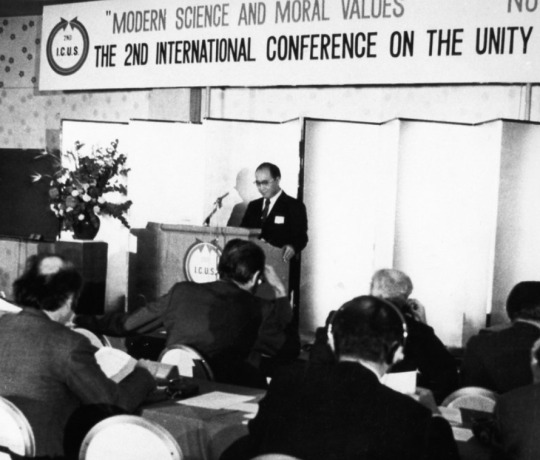
Isn’t it interesting how often the Moonies allowed sociologists, psychologists, and anthropologists into their workshops, into church meetings, into very sacramental and intimate church spaces? There are so many studies and papers from the 70s into the 80s, and of course even before that, with Young Oon Kim’s Bay Area Moonies getting involved in the John Lofland and Rodney Stark study in the early 60s. There were studies on the process of conversion and de-conversion, personality and behavior modification, marriage, etc., with these research often trying to figure out how Moonies function and live in the world, how their beliefs mold their actions and thoughts, and often revealing that these sorts of changes (conversion to Moonies) are possible for just about anyone, especially those with more typical, well-adjusted, middle class backgrounds.
The UC was known to have often pushed some of its members into interviews and surveys, especially those considered more “normal” and PR-worthy, but at times, they freely allowed researchers into their spaces, with access to “insider” information and experiences.
Some of these researchers saw the more eccentric, ecstatic, and concerning behaviors at the Barrytown workshops.
This may have been due to the carelessness of the researcher’s temporary central figure and their inability to properly shield the eyes of the researcher(s), but also may have been intentional, or thoughtless. Maybe they wanted the researchers to understand and see what was going on... to help contribute and develop a science.
What science? Well, regarding mind control, conversion, personality changes, and actions/practices that can cause dissociation and memory loss. These were all things heavily being studied on CIA funds from the 50s into the 70s/80s. These things are still being studied by the CIA, having advanced and evolved in a time of the constant surveillance and communication via the internet.
Perhaps that’s jumping the gun, but how could this have not played some role throughout UC history, considering... US history and their confirmed operations at the time.
Perhaps UC leaders did not know... but it seems unlikely that they didn’t, especially considering Young Oon Kim’s time with Rodney and Stark, which was when two budding, CIA-connected academics studied the largely unknown Moonies’ conversion process and helped Kim translate the Divine Principle in English (which had initially started with the help Pastor McCabe in Korea, a visiting prophetic Pentecostal leader from Australia, whose Apostolic Church denomination paid for him to liaison with Moonies in the 50s, though McCabe later on denounced Moon’s doctrine.)
Not all of these studies reflected well on Moon and his organization, though some were used for apologetics, even if framed as “critical.”
Some of these studies were used in deprogramming cases to say that the UC was not a threat, and that there was no genuine “brainwashing” or “mind control” occurring that the UC could be held responsible for.
It was also during this time that Moonies had been very actively forging ties with academia and cultural institutions, from donating to Christian seminaries (”Shaw Seminary”) to paying renowned Nobel prize-winning scientists to speak at conferences and join the boards of their organizations, like Professors World Peace Academy and International Conference on the Unity of the Sciences, as well as pumping out propaganda through their own organizations like Korean Cultural and Freedom Foundation. These ties and connections led to the purchase of the University of Bridgeport in the 90s.
It probably would help to have ties to the institutions studying your organization. It probably helps to have their studies keep your organization safe in court. It also probably helps the government to keep this organization safe. As we know now, George H.W. Bush protected Moon through the Koreagate years. We also know that Rep. Leo Ryan, who was murdered in Guyana following his time in Georgetown, had found substantial evidence prior to his Guyana trip that the UC and other cults in the U.S. were being used by the government as intelligence operations.
Related articles below
Rev. Moon Buys а College, Hires Spooks & Moonies (1992)
Aid to Rep. Ryan Warns U.S. on Cults (1979)
Young Oon Kim, Lofland, Stark, and the Institute for Personality Assessment and Research
On Young Oon Kim’s Disciples, Early American Moonies, and the Conversion Process
More Questions about Young Oon Kim, and What is Clear
Neil Salonen on the Freedom Leadership Foundation’s influence on society (1971)
A brief biography of Sun Myung Moon
On the UC links to intelligence
On the Unification Church in Japan and its political (KCIA)
Parapolitics and being an ex-Moonie on the Left origins
Mind Control U.S.A. (1979) - On cults, LSD, CIA, mind control, and politics
How the CIA backed research on mind control - by David Dickson (Nature Vol. 278)
Rev. Moon Aide Concedes KCIA Sent Him $3,000 (1978)
On Robert Jay Lifton - excerpted from “The C.I.A. Doctors Human Rights Violations by American Psychiatrists” by Colin A. Ross
The Moon Organization and the KCIA – ‘Privatizing’ covert action
Robert Parry’s investigations into Sun Myung Moon
Moonies Were Brainwashed by The CIA As Soldiers In The Cold War
The Unification Church and KCIA: Some Notes on Bud Han, Steve Kim, and Bo Hi Pak
FBI and other reports on Sun Myung Moon
#john lofland#rodney stark#academia#sociology#moonies#unification church#unification church history#church history#history#front organizations#front groups#unification church in the united states of america#unification church in usa#unification church in the united states#CIA#parapolitical#intelligence agencies#pwpa#professors world peace academy#university of bridgeport
1 note
·
View note
Text
Леммингомания
Чем руководствуются люди в принятии своих решений? Только ли своими предпочтениями, жизненным опытом?
Или поведение может изменяться под давлением мнения большинства, в движении толпы, в главенстве норм и, в конце-концов, установленных правил режима? Кто ответственен за наше поведение и можем ли мы сказать, что всегда можем контролировать его сами?

Для начала, установим различие между толпой и массой.
Джон Лофленд (John Lofland), американский социолог, даёт такие определения:
Толпа - "относительно большое число людей, находящихся в непосредственной близости друг к другу (лицом к лицу)".
Масса - "совокупность людей, которых волнует одна и та же тема, но они не находятся в непосредственной физической близости друг от друга".
Причём он выделяет 3 основных типа эмоций, которые люди могут испытывать сообща: Страх, Враждебность и Радость.
Коллективное поведение встречается как в толпе, так и в массе. Но, чем обусловлено это поведение? Что заставляет людей принимать участие в каких-либо событиях и действовать сообща? И кем представлены эти люди?
Что касается толпы, то чаще люди вступают в неё бессознательно или под влиянием различных обстоятельств. Прохожих заставляют обратить на себя внимание, например, шумы, крики, звон разбивающегося стекла, музыка. Какие-то факторы принуждают людей оказаться вместе. Например, опасные для жизни ситуации, пробки на дорогах.
Кроме того люди узнают о беспорядках, демонстрациях, концертах по слухам, по радио или телевидению, а также из многих других источников, и вступают в толпу уже осознанно.
Мы описали ситуации, способствующие сбору толпы, но этого недостаточно, чтобы принудить её к действиям.
Здесь вступают в дело слухи. Слухи осуществляют несколько важных функций. Помимо всего прочего, они придают значение ситуации, которую люди не понимают. На это значение глубокое воздействие оказывают верования и ожидания, которые люди уже восприняли. Слухи готовят людей к действиям. Они помогают им понять, что случилось и должно произойти, а также что и где надо предпринять.
Есть различные теории, которые пытаются объяснить, что происходит с людьми, оказывающимися в коллективах.
Социальный мыслитель начала XX века Гюстав Лебон (Gustave Le Bon) говорил, что в толпе "разумные люди превращаются в жестоких, обезумевших зверей, способных на поступки немыслимые вне толпы". Он полагал, что в толпе формируется коллективный разум. Более того, он объяснял эту метаморфозу:
а) анонимностью участников
б) "заражению идеями" (скорее здесь речь идёт о слухах, быстро распространяющихся среди участников)
в) внушаемостью участников и наличием лидера.
Однако в ней есть много пробелов, ведь не все ведут себя стандартно и не обязательно преобладает агрессивность и жестокость.
Вот пример. Ранее историками считалось, что Французская революция была осуществлена асоциальными людьми, бедняками, отбросами общества. Но после изучения протоколов следственных дел по арестам было выяснено, что основной класс составили торговцы и ремесленники, и событие было спланированным. Люди хотели перемен в самой социальной структуре общества. Теория Лебона здесь не подходит.
Но, с другой стороны, почему революции возникают в определённое время и при определённых условиях? Ответ есть: потому что в основе массового движения лежит конфликт между ценностями и реалиями в обществе. Революция возникла именно тогда, когда появилось Посвящение и возникли те самые идеи равенства. Пока их не было, понятия несправедливости не могло возникнуть в умах людей.
То же касается примеров равенства чёрных и белых в США с движением Мартина Лютера Кинга, волнений среди населения бывших колоний, движения феминисток и т.д.
Итак, повторюсь - КОНФЛИКТ МЕЖДУ ЦЕННОСТЯМИ И РЕАЛИЯМИ. Это будоражит массы. Причём конфликт не обязательно в крупных масштабах. Сейчас в Америке, например, актуальна проблема медицинского страхования. Страховку могут позволить себе богатые, в то время как миллионы граждан не могут получить современную мед. помощь. Или в России проблемы с ОМС также стоят остро. Ценность - право на равенство и защиту государством своих граждан. Реалии - недочёты в системе страхования. Вывод - волнения масс - социальные движения, протесты, демонстрации, петиции в правительство.
Но и здесь наличие проблемы предполагает разные подходы к её решению. Почему одни действуют одним образом, а другие иным?
Здесь основное влияние оказывают:
а) степень восприятия случившегося (разный п��рог внушаемости и порог терпения)
б) степень затронутости интересов (соучастности) в событии.
в) степень ответственности (или как я могу повлиять, каковы мои возможности)
И люди выбирают, в какой модальности им работать. Либо в сплочённом коллективе, ищут соратников, либо в одиночку, либо в общей массе. Если, конечно, позволяют условия.

В современном обществе существуют бок-о-бок десятки тысяч различных движений, причём зачастую с противоположными интересами. Этот механизм оправдан, потому что защищаются интересы различных общественных групп. В какое движение примкнуть - решение индивидуальное, и, как писалось выше, есть результат синтеза имеющихся ценностей, степени затронутости и соучастности событиям.
Но вот ещё один аспект: есть движения международные, а есть движения на уровне страны, в пределах замкнутого коллектива. Степень их оправданности решает само общество и руководство этим обществом. Следовательно они могут подавляться, игнорироваться или исчезать сами за ненадобностью или ограниченностью в ресурсах. У человека есть выбор, но в какой форме он его будет выражать зависит от заинтересованности и условий.

11 notes
·
View notes
Note
hey there! i was wondering if you could help me with fcs for lucian bole, he's a harry potter side character and slytherin beater. basically any guy who looks under 22 and has a slytherin vibe would be a great help :3
Hi hun! I actually had a lot of fun looking for fcs for this one, particularly because we never really got to know Lucian Bole, and physical description of him is varied across different outlets. So, anyway, here are a list of actors that I think can play someone younger than 22, and of a “Slytherin-esque” vibe. (I wasn’t exactly sure how young you wanted him to be, so I just targeted my age range from 18-22 years old.)
David Mazouz (18)
Lucas Jade Zumann (18)
Nicholas Hamilton (18)
Evan Bird (18)
Mason Cook (18)
Caleb McClure (18)
Devin Druid (20)
Forrest Goodluck (20)
Nick Romeo Reimann (20)
Charlie Tahan (20)
Antoine-Oliver Pilon (21)
Asa Butterfield (21)
John-Alan Slachta (21)
Kodi Smit-McPhee (22)
Lucas Hedges (22)
Jacob Lofland (22)
If you can notice from my list, they’re mostly (very) underused fcs. I know most of these don’t have any gif resources, or any that are recent. If you want, I’d gladly make some for you. Just hit me up!
I hope this helped!

#answered#anonymous#rph#rp help#rp helper#rpa#fc help#fc helper#fc suggestion#lucian bole#underused fcs#underused fc#male fc#david mazouz#lucas jade zumann#nicholas hamilton#evan bird#mason cook#caleb mcclure#devin druid#forrest goodluck#nick romeo reimann#charlie tahan#antoine oliver pilon#asa butterfield#john alan slachta#kodi smit mcphee#lucas hedges#jacob lofland
1 note
·
View note
Text
This decline of the MRA in Japan is said to be because of the successful protests against “Ampo”, and because of that success, a new front group, the APACL, gets brought in. In March, 1958 a steering committee meeting had been held in Mexico City to plan the merger of APACL and other, similar anti-communist organizations into the World Anti-Communist League (which doesn’t actually get made until 1966) but this shows the purpose of it and that it was being planned this far back.
Junas tells us that: By one account, in 1959 or thereabouts, (i.e., on the eve of the Ampo struggle) Moon himself had acted as a go between trying to bring together the MRA and APACL factions.
The third man of the jail trio, Sasakawa was the important behind-the-scenes player in this APACL, while Kishi takes his usual place as “front man” for that as well. Kishi would later do this for the Moon Organization too, obviously liaising with Kim Jong-Pil and having Moon start agitating on “anti-communist” work. Sasakawa helps out Moon’s agent Choi’s immigration proceedings by appearing as his guarantor.
Moon takes on his next task, working together with his MRA/CIA contacts he sends some “missionaries” to the U.S. in 1959, one of which was Young Oon Kim, another was Bo Hi Pak – the man who also worked directly for KCIA and Jong-Pil.
Meanwhile the soon-to-be “coup” replacement, Park Chung Hee, a major general in the Army, holds a meeting with American military officials at the Army’s 6th district division office in 1959.
Note: This pic was provided by Kim Jong-pil to Korea Joon Gang Daily who did a series in 2015 called Kim Jong-Pil Remembers. If anyone can positively identify the other people in it, please drop me a note in the comment section.
So, while the intelligence/military men are having meetings with Park, 1960 rolls around and as Junas put it: Kim Jong Pil “organized” the Unification Church as a “political tool”.
The military officers Moon had been busily recruiting in the late 1950s, are also about to come into play in this “coup”…and meanwhile Moon’s people in the U.S. will soon undergo a corresponding transformation with the help of sociologist John Lofland, who was then doing a “study” tasked by the OSS/CIA created Institute for Social Research out of Berkeley University. (more on that in a separate post, because that’s one hell of a story all by itself).
Kishi coordinates the same thing in Japan, organizing the Japanese Unification Church–known there as Genri Undo, or “Principles Movement”. I believe this was all part of starting to replace the religious front group aspect of the now almost defunct MRA.
Clearly this plan had actually began earlier, or perhaps the Koreans are taking advantage of the existing plan (there is some evidence to point to that) to forward some agenda of their own. Anyway, prior to this date that Junas gives as the “organization” of the Moon church, not only was MRA man and Kishie triangle collaborator Kim Jong-Pil already working on those connections with American military here in 1959, he was clearly involved with sending out agents to America to “watch” Korean ex-pats (more like terrorize).
I say that, because one of the first people that Moon sent to America was Joon Rhee, who lived his intelligence cover as a martial arts teacher/moonie – but never breaking his strong KCIA intelligence connections through Bo Hi Pak and Kim Jong-Pil.
You could say that Moon and Jong-pil sent their own special triad or triangle. Young Oon Kim to the western American seaboard, Bo Hi Pak to the eastern, and Joon Rhee to South Texas. An interesting diagram, geographically.
Jhoon Rhee, begins teaching Tang Soo Do at San Marcos Southwest Texas State College in 1959, later changes the name to the name more of us recognize – Tae Kwan Do.
excerpted from: https://mikemcclaughry.wordpress.com/virginias-research/korean-intelligence-head-kim-jong-pil-and-the-mra-moral-rearmament/
0 notes
Text
Próximos Projetos
Pode ainda faltar algum tempo para a estreia de Maze Runner: A Cura Mortal, mas os atores e Wes Ball já garantiram novos projetos, incluindo alguns que ainda poderemos ver antes de fevereiro de 2018.
Começando por WES BALL, que atualmente ainda se encontra a trabalhar no último filme da trilogia, este assinou um contrato de 3 anos com a 20th Century Fox no início de 2016 que deu um lugar à sua empresa OddBall Entertainment nos headquarters do estúdio. Foi ainda noticiado na altura que a sua empresa, formada em conjunto com John Hartwick Jr., já tinha dois projetos: In Search of Humans e Fall of Gods. (post)
Mais recentemente, foi anunciado que a OddBall Entertainment estará também envolvida num thriller, ainda sem título, do realizador Jason Eisener baseado na curta-metragem One Last Dive do mesmo realizador. Por último, Ball irá ser o produtor executivo do piloto da série Mosaic, da NBC, tal como noticiámos recentemente. (fonte, post)
Ainda sem qualquer informação, é esperado que a curta-metragem Ruin de Wes Ball também seja eventualmente adaptada para o grande ecrã uma vez que a Fox adquiriu os direitos da mesma aquando a contratação de Ball para o filme Maze Runner.
youtube
Curta-metragem Ruin, de Wes Ball.
WILL POULTER, que interpreta Gally na saga, interpreta Krauss no filme Detroit realizado por Kathryn Bigelow, que aborda o motim na cidade de Detroit em 1967. O filme está já em exibição nos EUA, tendo recebido boas críticas, e conta também com JACOB LATIMORE, que interpretou Jeff em Maze Runner: Correr Ou Morrer. Chega a Portugal apenas a 21 de setembro pela NOS Audiovisuais. (fonte)
Para além de Detroit, Poulter participará também em The Little Stranger, realizado por Lenny Abrahamson (realizador do filme Room), e consiste na adaptação cinematográfica do livro escrito por Sarah Waters em 2009. A produção começou durante o verão no Reino Unido e tem data de lançamento prevista para 2018. (fonte)
youtube
Trailer de Detroit.
Em relação às raparigas do Grupo B, KATHERINE MCNAMARA é atualmente Clary Fray em Shadowhunters, cuja 2.ª temporada terminou recentemente. A série já foi renovada para a 3.ª temporada e todas as temporadas já emitidas podem ser vistas na Netflix. NATHALIE EMMANUEL é Missandei em Game of Thrones, cuja 7.ª temporada está atualmente em exibição no Syfy. A 8.ª e última temporada irá estrear no próximo ano.
DYLAN O’BRIEN interpreta Mitch Rapp na adaptação cinematográfica dos livros escritos por Vince Flynn, American Assassin. O filme foi gravado no outono e conta também com a participação de Michael Keaton. Estreia em Portugal a 14 de setembro pela Pris. (fonte)
Poderá ser também visto na temporada 6B de Teen Wolf, onde será Stiles Stilinski por apenas mais 3 episódios. A temporada está atualmente a ser transmitida nos EUA.
youtube
Trailer de American Assassin.
GIANCARLO ESPOSITO poderá ser visto na 4.ª temporada de Better Call Saul, a estrear em data a anunciar em 2018, como Gus Fring, a sua personagem de Breaking Bad. Esposito irá também participar no filme The Long Home, realizado por James Franco e baseado no livro de William Gay, ainda sem data de estreia. Para além disso, entra no filme The Gift, com Patrick Stewart e Katie Holmes, também ainda sem data de estreia Em relação aos seus papéis mais recentes, pode ser visto em Okja, na 2.ª temporada de Better Call Saul e na Parte 2 de The Get Down, todos disponíveis na Netflix. (fontes: 1, 2, 3)
ROSA SALAZAR será Alita em Alita: Battle Angel, a adaptação live-action de James Cameron do manga Battle Angel Alita com estreia em 2018. Foi recentemente anunciado que participará também no filme The Kindergarden Teacher, atualmente em gravações, que conta com atores como Maggie Gyllenhaal, Gael Garcia Bernal, Michael Chernus, Anna Baryshnikov, Daisy Tahan, Samrat Chakrabarti e Ajay Naidu. (fontes: 1, 2)
KAYA SCODELARIO, THOMAS BRODIE-SANGSTER, KI HONG LEE E JACOB LOFLAND não têm atualmente projetos anunciados. Contudo, Kaya Scodelario participou mais recentemente em Pirates of the Caribbean: Dead Men Tell No Tales; Thomas Brodie-Sangster em Red Nose Day Actually, onde voltou a interpretar a sua personagem de Love Actually; Ki Hong Lee em Wish Upon e Special Citizen, sem data de estreia em Portugal; e Jacob Lofland na série The Son, emitida este ano no canal AMC Portugal.
Post original de The Maze Runner Portugal. Se copiar, dê os devidos créditos.
#text post pt#news pt#wes ball#will poulter#dylan o'brien#giancarlo esposito#rosa salazar#thomas brodie sangster#kaya scodelario#ki hong lee#jacob lofland#katherine mcnamara#nathalie emmanuel#**#by beatriz
1 note
·
View note